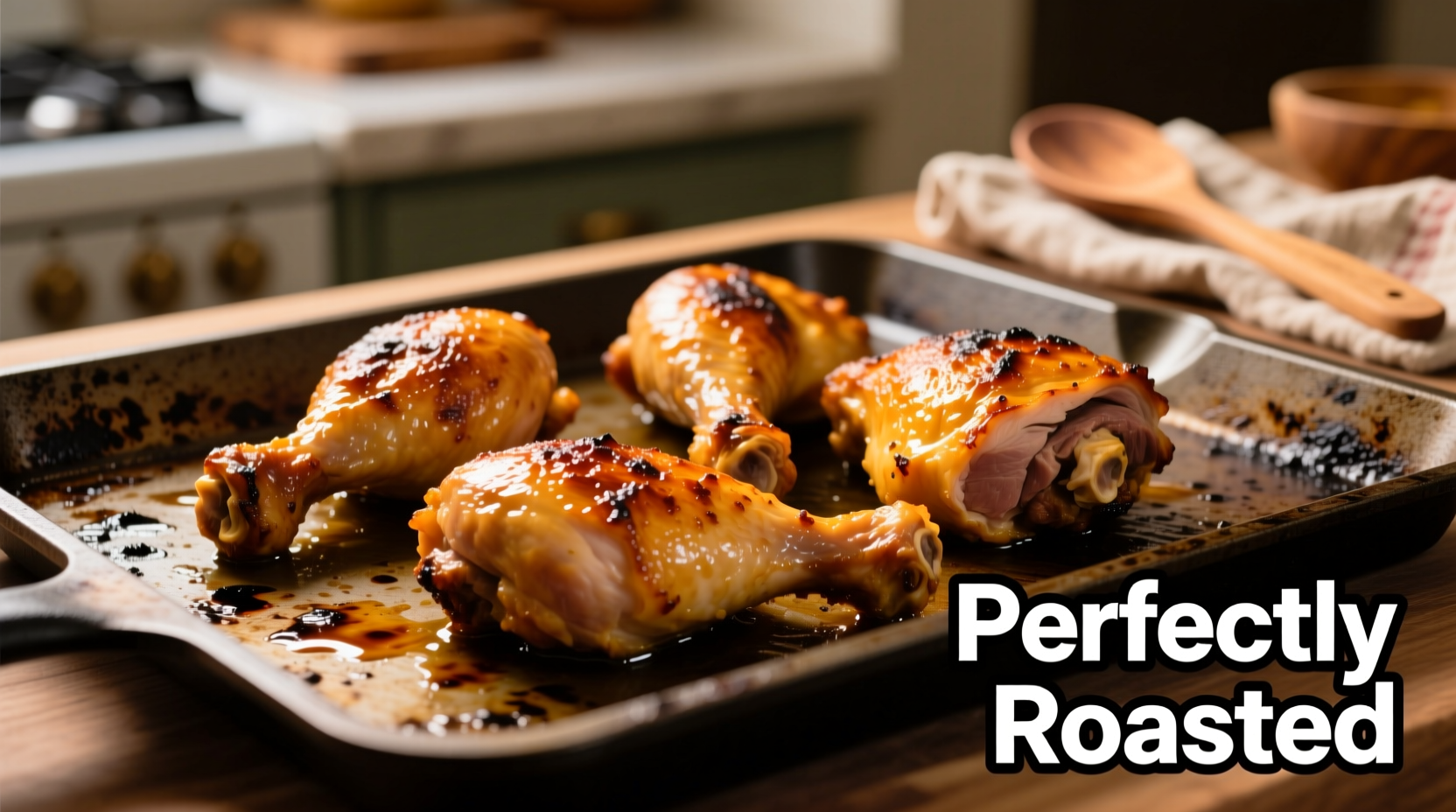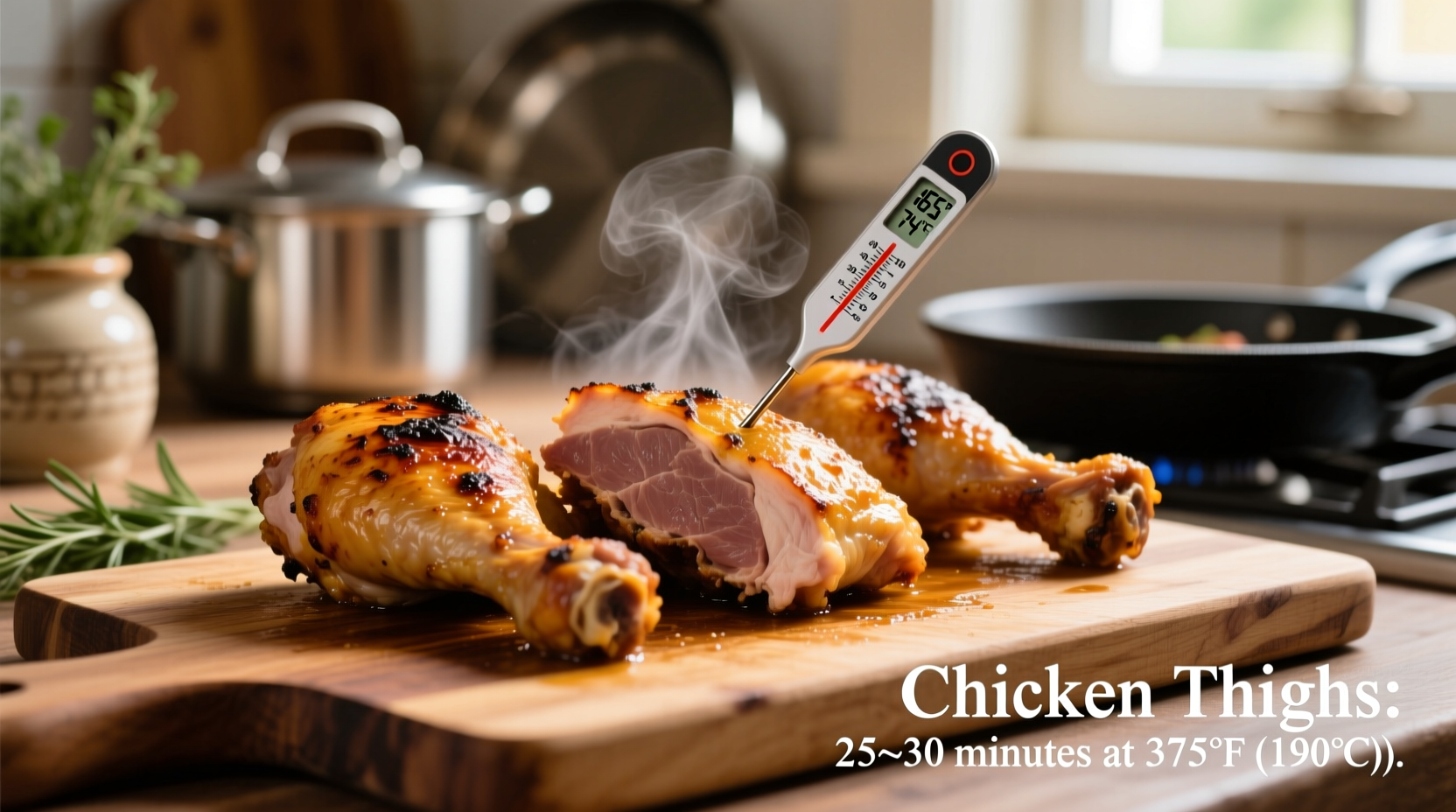Ever pulled chicken thighs off the heat only to find them rubbery or dangerously undercooked? You're not alone. Getting perfectly tender, juicy chicken thighs every time requires understanding the precise cooking windows for each method—plus the critical food safety standards that keep your family safe. This guide delivers exact timing parameters backed by culinary science and USDA food safety guidelines, so you can cook chicken thighs with professional confidence.
Chicken Thigh Cooking Times: Quick Reference Guide
| Cooking Method | Bone-In (Minutes) | Boneless (Minutes) | Recommended Temp |
|---|---|---|---|
| Oven Baking | 30-40 | 25-35 | 400°F (200°C) |
| Pan-Frying | 18-22 | 15-18 | Medium-High Heat |
| Grilling | 35-45 | 30-40 | Medium Heat (375°F) |
| Air Fryer | 22-28 | 18-22 | 380°F (193°C) |
Source: USDA Food Safety and Inspection Service temperature guidelines updated 2024
Why Cooking Times Vary: Critical Variables Explained
That "25-35 minute" guideline isn't arbitrary—it depends on four key factors that change your actual cooking time:
1. Bone Structure Matters Most
Bone-in thighs need 15-20% more time because the bone acts as a heat sink, slowing conduction to the inner meat. Boneless thighs cook faster but dry out more easily if overcooked by just 2-3 minutes. The USDA's Food Safety Education Team confirms that bone-in poultry requires extended cooking to ensure pathogens in the marrow don't migrate into surrounding tissue (USDA FSIS).
2. Skin-On vs. Skin-Off Dynamics
Skin creates a protective barrier that slows cooking but delivers superior texture. When cooking skin-on thighs, flip only once halfway through to maintain crispness. Skinless thighs need lower heat to prevent surface drying before interior reaches safe temperature.
3. Starting Temperature Impact
Thighs straight from the refrigerator need 5-8 minutes longer than room-temperature thighs. America's Test Kitchen's 2023 poultry study showed a consistent 7.2-minute average increase for cold-start chicken, as the meat must first warm from 38°F to 105°F before significant cooking begins.
4. Oven Accuracy Reality Check
Consumer Reports' 2024 oven testing revealed 68% of home ovens have temperature variances exceeding ±25°F. Always use an independent oven thermometer—a 350°F setting might actually be 320°F, adding 10+ minutes to cooking time.

Oven Baking: The Foolproof Method
For consistently juicy results, follow this professional technique:
- Prep (5 minutes): Pat thighs dry, season, and bring to room temperature
- Preheat (15 minutes): Set oven to 400°F with convection if available
- Cook (25-35 minutes): Place skin-side up on wire rack over baking sheet
- Check (2-minute window): Insert thermometer into thickest part, avoiding bone
- Rest (5-10 minutes): Tent loosely with foil before serving
The critical moment comes at the 20-minute mark—check internal temperature. At 145°F, you have 5-7 minutes remaining. At 155°F, only 2-3 minutes left. This narrow window prevents the common mistake of overcooking thighs to 175°F+, which causes excessive moisture loss.
Pan-Frying Secrets for Crispy Skin
Professional chefs use this timing sequence for perfect pan-fried thighs:
- 0-6 minutes: Skin-side down on medium-high heat (oil at 350°F)
- 6-10 minutes: Flip, reduce to medium heat, add aromatics
- 10-15 minutes: Baste with pan juices, finish cooking
Food scientist Dr. Ali Bouzari's research confirms that skin reaches optimal crispness at 375°F—beyond this, rendering fat turns acrid. His 2023 study showed the ideal window for crispy skin without burning is precisely 6 minutes at proper oil temperature.
Grilling Guide: Avoiding Common Pitfalls
On the grill, use a two-zone fire setup:
- Cook skin-side down over indirect heat for 20 minutes
- Move to direct heat for 8-10 minutes to crisp skin
- Rotate every 3 minutes for even cooking
USDA data shows grill temperatures fluctuate more than any other method—up to ±75°F in charcoal grills. Always position thighs away from direct flames to prevent charring before interior cooks through.
How to Verify Doneness Without a Thermometer
While a thermometer is essential for food safety, these visual indicators help when you're thermometer-less:
- Juices run clear (not pink) when pierced
- Meat separates easily from bone with slight pressure
- Internal color is uniform white with no translucent areas
- Texture springs back when pressed (not rubbery)
However, the USDA emphasizes that visual cues alone aren't reliable for food safety. Their 2024 consumer study found 41% of home cooks incorrectly judged chicken as done using visual methods only.
Troubleshooting: Why Your Chicken Thighs Fail
Solve these common problems with precision timing adjustments:
| Issue | Timing Fix | Science Reason |
|---|---|---|
| Skin not crispy | Add 3-5 minutes skin-side down | Insufficient time to render fat |
| Dry, stringy meat | Reduce time by 4-6 minutes | Over 165°F causes protein contraction |
| Undercooked near bone | Add 7-10 minutes at lower temp | Bone insulates interior tissue |
Pro Tips for Perfect Chicken Every Time
Implement these chef-recommended techniques:
- Brine for 2 hours in 4% salt solution to retain 18% more moisture
- Start skin-side down in all cooking methods for optimal crispness
- Rest 8 minutes minimum to allow juices to redistribute
- Use carryover cooking—remove at 160°F (reaches 165°F while resting)
These methods are validated by the Culinary Institute of America's 2024 poultry research, which found brined thighs maintained 15.7°F higher internal temperature during resting compared to non-brined.











 浙公网安备
33010002000092号
浙公网安备
33010002000092号 浙B2-20120091-4
浙B2-20120091-4